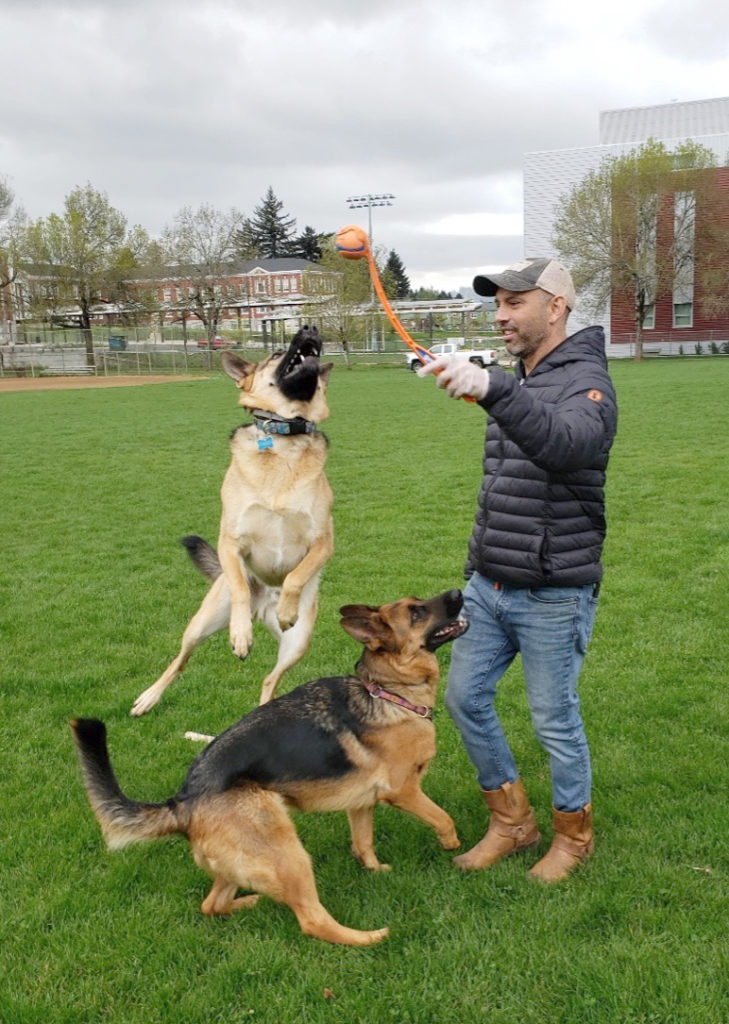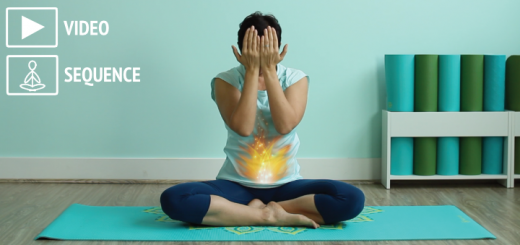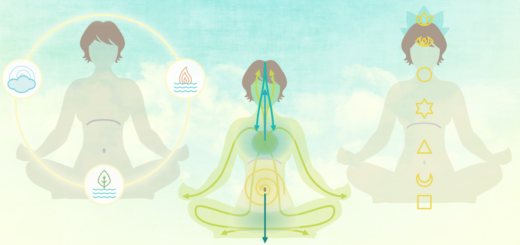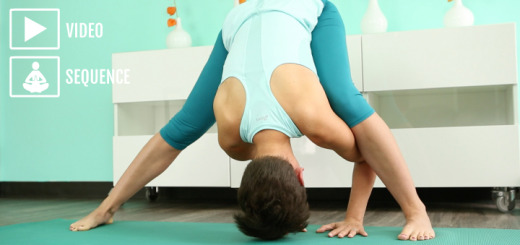The racing German Shepherd in the mind
4
Alison Wesley, Registered Yoga Teacher/Therapist and Franklin Method Educator
Before I ever truly experienced anxiety, I studied it. I read about it. As a yoga teacher and yoga therapist, I was conscious about how to offer a calming, soothing practice for anxious times. Most of the books and videos I turned to stressed the importance of offering slow, mindful practices as a way to lessen anxiety. It made sense to me, and it’s what I provided for years.
But then I experienced anxiety myself in a big way. For months during the start of the pandemic, I was “lucky” enough to get firsthand knowledge of panic attacks, insomnia and anxiety. It started out with minor symptoms that I didn’t quite put together until they all became one giant snowball of twitches, night sweats, stomach aches, and negative self-talk that seemed to be on repeat.
I tried my usual practice. I tried to lie on a bolster. I tried to meditate. But what was racing inside me couldn’t just be calmed. It reminded me of trying to train my two young German Shepherds to walk calmly next to me when really, they just needed to run and get energy out before they could successfully walk at a slow pace. I was bouncing off the walls just like them, even if, on the outside, I appeared normal.
You see, with anxiety, there’s an imbalance of the gunas. According to Samkhya Philosophy, the gunas are attributes present in all things, as the building blocks of everything and everyone. In everything, there’s a particular blend of all three: sattva guna (goodness/light/harmony), rajas (activity, movement, turbulence) and tamas (inertia, dullness, heaviness). I like to think of it as a spectrum with sattva in the middle and rajas and tamas at either end. And while this spectrum of the gunas relates to everything (our physiology, our structure, etc.), it works very well to think of the gunas in terms of the mind.

Photo by Alison Wesley
In anxiety, for the most part, we’re way over at the end of the spectrum near rajas. We have an excess of activity, movement and turbulence of the mind. When it comes to sequencing a yoga class, especially in terms of supporting folks with anxiety, we need to keep the gunas in mind. Instead of beginning a class with stillness, which can be overwhelming for that metaphorical German Shepherd bouncing around inside, asana can be used to “burn off” the excess rajasic energy. Starting class with movement helps meet you where you are if you’re experiencing anxiousness. Moving, shaking, and tapping are great ways to begin, as are Sun Salutations if your practice includes those.
As a formula, appease the guna that is in excess first. Meet it where it is. Similarly, if you show up to class feeling heavy or tired (excess of tamas guna), it would be unfair to ask you to do dynamic movements right off the bat.
In terms of anxiety, begin the practice with motion and then take the rest of the class to gradually slow down. By the time Savasana comes, someone who had that racing heartbeat at the beginning will be more prepared to be still. That stillness comes if they were able to burn off some excess energy and incrementally slow down throughout the practice.
Try the same formula when the excess rajasic energy shows up as insomnia. I remember experiencing many awful nights that seemed to last forever when I’d try to stay still with my eyes closed (“I’m still getting rest,” I thought). It wasn’t until I actually started getting out of bed, doing some tapping and swinging of my arms followed by some slower, mindful movements like Cat/Cow, followed by a longer held stretch like Child’s pose, that I started feeling like I was able to shift the energy and get back to bed. My teacher shared a story of her student who, when he couldn’t sleep, would extend his arms and legs up while lying on his back and keep them there until he couldn’t anymore. Afterward, he was so exhausted that he could fall asleep (although sometimes it could take 30 minutes of being in that position).
Along with the value of working the gunas, the importance of this formula is that it honors where you are and where you’re starting from. When we’re anxious, we’re already feeling enough judgment and desire to be feeling something else; it’s only compounded if we feel unsuccessful doing the thing that was supposed to help (that calming yoga class).
Yoga shifts our energy and changes our state of being. It’s as though we step on the mat as one person and step off the mat as a better, more balanced and clearer version of ourselves. And if it’s sequenced well, it seems like magic.
Let’s put these ideas into practice with this short yoga routine: Try on different versions of yourself to settle anxiety.
This practice moves from being dynamic to being more still. After initially shaking off loose excess energy and tensions, this practice gives you an opportunity to “try on” different versions of yourself: the one that possesses qualities like fierceness, strength, and sturdiness, and another that is okay with not knowing the answer, going with the flow, not having anything to do. The practice concludes with breathwork to elongate the exhale. This practice is less about what poses you do and more about who you are while practicing.

Alison Wesley is a Faculty Franklin Method Educator and Registered Yoga Teacher/Therapist in Portland, OR. She started Working with Yoga in 2008 (now Movement at Work) as a way to reach folks who might not be going to studios/gyms, making movement accessible where and when people work. Alison assists Franklin Method Teacher Trainings and co-wrote Understanding the Pelvis: A Functional Approach to Yoga with Eric Franklin. She designed and leads mobility classes for back care at Rebound Physical Therapy and has a therapeutic movement video series called ThrUMovement. Along with geeking out about movement, anatomy and mental training, Alison kickboxes with her father, plays music with her husband, spends hours trying to train her two German Shepherds, dances salsa and will endlessly be studying Spanish.




















Alison’s class commencing with movement and focus on state of bring i.e the gunas and connection through legs and feet on the earth to tadasana was empowering and uplifting. I loved the whole sequence. Thank you
Thanks for reading and sharing your feedback, Wendy!
Muy buen artículo. Tiene mucho sentido quemar el exceso de energía para ir calmándose poco a poco.
Muchas gracias Alison.??
Muchas gracias por leer mi artículo. Me allegra que te haya gustado, Gala.